Welcome back everyone! This is my final week of my marine science internship. The last three weeks have been enlightening. I’ve learned so much about the working environment, myself, and of course marine biology.
The beginning half of my week I started at the old marine wildlife center then switched over to the new science center. At the old one I started with making meals for the animals. All the animals basically ate the same thing just in smaller portions of different ingredients. I think meal prepping for the the sea turtle, named Addie, is probably my favorite. With her we make gelatin cubes made up of kale, squid, carrots, and cod. She’s not as fun to feed though. I think my favorite animals to feed are the blue crabs. My reasoning for this is they are aggressive when target feeding. Naturally blue crabs are a aggressive species.
During my time at the old center I was able to go out in the field and collect animals for the exhibits. Chantel, the lady I worked, with took me on a pontoon boat. We caught two sting rays but released one, two squid, one spider crab, and lastly one jellyfish. This was very exciting for me. Along with that, one of the squids I was trying to move into a bucket inked on me. She told me how squids’ chromatophores still move when they die. Chromatophores are small dots that squid can change colors depending on their mood such as angry, scared or hungry, or to camouflage themselves to their surroundings to escape from predators. I think Cephalopods are my favorite animals.
For Thursday and Friday I spent my days at the new center with the sea campers. This is were we taught about the marshes and the ocean. These two days we talked about about jellyfish, plankton, crabs, and marsh birds. Crabs, jellyfish, and some types of fish can be as minuscule as plankton. Plankton can also be longer than the blue whale, which is the largest animal in the face of the earth. It’s hard to fathom that a microscopic animal can be longer than the biggest animal. While teaching about plankton we also talked about bioluminescence. Bioluminescence is what helps animals like the giant and colossal squid hunt. So the prey of these large animals have light that their basketball sized eyes pick up. To wrap up my trip, the very end of my day, Friday, my co-workers surprised me with a manta-ray key chain and some birthday cake mini doughnuts. They also sang me a cute good-bye song. Overall this trip has been an extraordinary experience that I will take with me and grow from for the rest of my life. Thank you everyone for reading my blogs and supporting me. 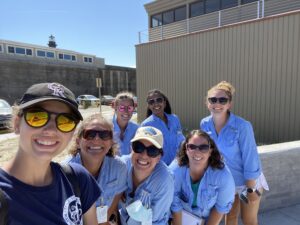

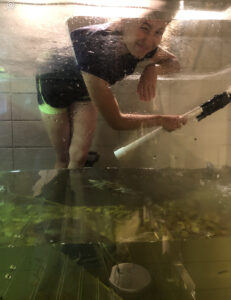
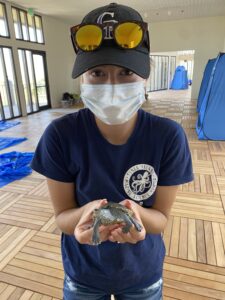
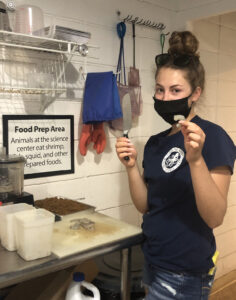
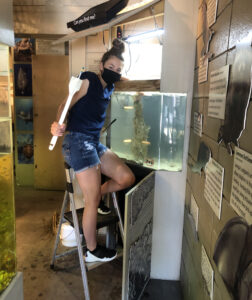
Loved your great summary on your training. Really appreciate you sharing with us. So very happy and proud of you. Take care. God Bless